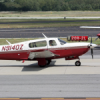-
Posts
375 -
Joined
-
Last visited
-
Days Won
1

Skywarrior replied to flyboy0681's topic in Modern Mooney Discussion

Skywarrior replied to flyboy0681's topic in Modern Mooney Discussion

Skywarrior replied to Mooneymechanic's topic in Avionics / Parts Classifieds

Skywarrior replied to Mcstealth's topic in Miscellaneous Aviation Talk

Skywarrior replied to 230KT's topic in Modern Mooney Discussion
We have placed cookies on your device to help make this website better. You can adjust your cookie settings, otherwise we'll assume you're okay to continue.